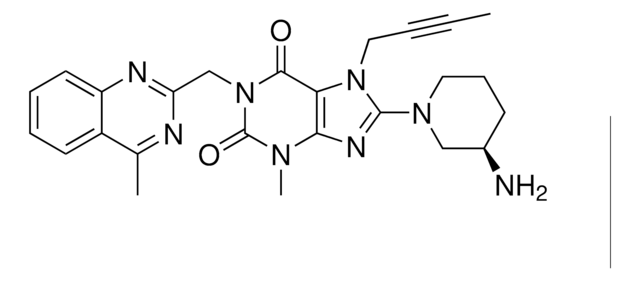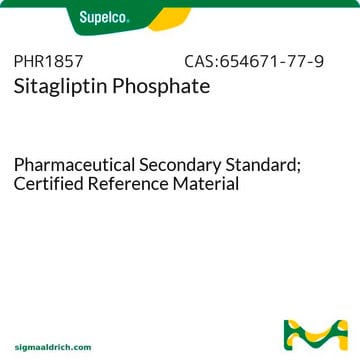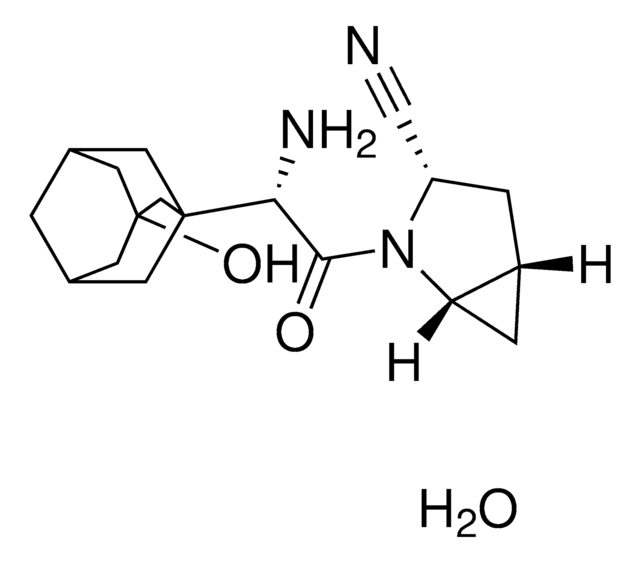SML3205
Sitagliptin
≥98% (HPLC)
Synonym(s):
(2R)-4-Oxo-4-[3-(trifluoromethyl)-5,6-dihydro[1,2,4]triazolo[4,3-a]pyrazin-7(8H)-yl]-1-(2,4,5-trifluorophenyl)butan-2-amine, (3R)-3-Amino-1-[5,6-dihydro-3-(trifluoromethyl)-1,2,4-triazolo[4,3-a ]pyrazin-7(8H )-yl]-4-(2,4,5-trifluorophenyl)-1-butanone,, MK 0431 free base, MK 431 free base, MK-0431 free base, MK-431 free base, MK0431 free base, MK431 free base
About This Item
Recommended Products
Quality Level
Assay
≥98% (HPLC)
form
powder
optical activity
[α]/D -17 to -23°, c = 0.5 in chloroform-d
color
white to beige
solubility
DMSO: 2 mg/mL, clear
storage temp.
−20°C
InChI
1S/C16H15F6N5O/c17-10-6-12(19)11(18)4-8(10)3-9(23)5-14(28)26-1-2-27-13(7-26)24-25-15(27)16(20,21)22/h4,6,9H,1-3,5,7,23H2/t9-/m1/s1
InChI key
MFFMDFFZMYYVKS-SECBINFHSA-N
Biochem/physiol Actions
Signal Word
Warning
Hazard Statements
Precautionary Statements
Hazard Classifications
Eye Irrit. 2 - STOT RE 2
Target Organs
Liver
Storage Class Code
11 - Combustible Solids
WGK
WGK 3
Flash Point(F)
Not applicable
Flash Point(C)
Not applicable
Certificates of Analysis (COA)
Search for Certificates of Analysis (COA) by entering the products Lot/Batch Number. Lot and Batch Numbers can be found on a product’s label following the words ‘Lot’ or ‘Batch’.
Already Own This Product?
Find documentation for the products that you have recently purchased in the Document Library.
Related Content
Explore protein pathway analysis through chemical library screening, investigating protein interactions, and modulating signaling pathways with small molecules.
Explore protein pathway analysis through chemical library screening, investigating protein interactions, and modulating signaling pathways with small molecules.
Explore protein pathway analysis through chemical library screening, investigating protein interactions, and modulating signaling pathways with small molecules.
Explore protein pathway analysis through chemical library screening, investigating protein interactions, and modulating signaling pathways with small molecules.
Our team of scientists has experience in all areas of research including Life Science, Material Science, Chemical Synthesis, Chromatography, Analytical and many others.
Contact Technical Service










